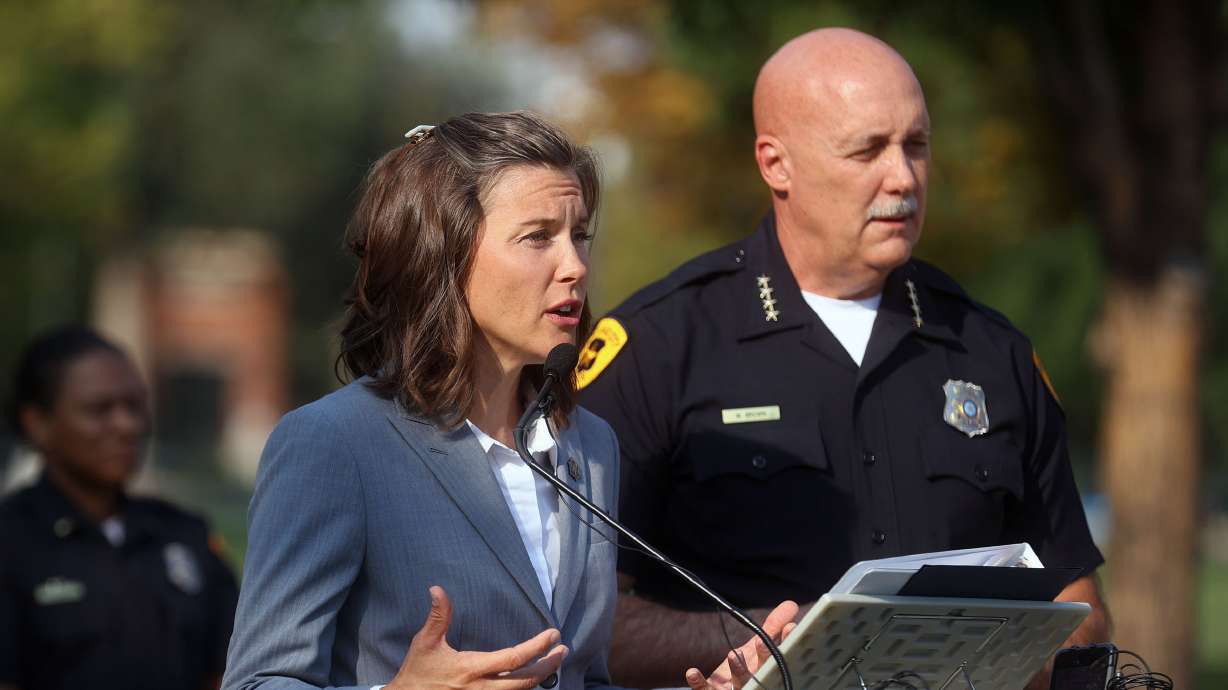Estimated read time: 3-4 minutes
This archived news story is available only for your personal, non-commercial use. Information in the story may be outdated or superseded by additional information. Reading or replaying the story in its archived form does not constitute a republication of the story.
SALT LAKE CITY — Salt Lake City leaders say they have the data, now they're ready to implement the next phase of their Violent Crime Reduction Plan which aims to address the root causes of violent crime in specific areas of the city.
In September, Salt Lake City partnered with criminology professors from the University of Texas at San Antonio to develop data-driven strategies for combating violent street crime. The criminologists have been collecting data — focusing primarily on murder, robbery and nonfamilial aggravated assaults — and looking at crime patterns and trends.
"It gives our police officers the ability to identify hot spots in the city and then proactively respond to those issues before they become larger issues in the community. And it's working. Year-to-date, total crime citywide is down 15% and violent crime is down more than 7%," Mayor Erin Mendenhall said.
On Wednesday, Mendenhall, Police Chief Mike Brown and two of the criminologists who compiled the statistics gave an update on their research and how it's being used.
Brown says in his department the data has resulted in targeted enforcement efforts and resources being sent into areas that statistically have higher crime. The result, he said, is overall crime in the city is the lowest it has been in seven years.
The first phase of the violent crime reduction plan included identifying "hot spots" in the city where crime is mostly likely to happen and on what days and times, and then sending officers to those areas at those times to act as a deterrent by being very visible.
The city is declining to say where those hot spots are to keep its investigative and enforcement efforts protected.
Wednesday's announcement, however, comes on the heels of a violent week in Salt Lake City that saw a 13-year-old girl shot and killed allegedly by her brother, two people shot at a park where a soccer match was happening, and reports of a stabbing and shooting over the weekend in the area around Exchange Place. Furthermore, the data from the criminologists shows violent crime has been slowly rising in the city from January through March.
But the authors of the study say fluctuations in the statistics are normal, and point to the fact that compared to the same time period a year ago, crime is down.
Mendenhall adds that an uptick in crime as summer approaches is expected. She also notes that the capital city is a source for entertainment, nightlife and other activities and that downtown Salt Lake City experiences an influx of visitors each weekend who have an impact on the city. Furthermore, Salt Lake City is not immune from the "broad tragic national reality of gun violence" that has affected many cities across the nation, she said.
The city will now use the data that has been collected and move into the second phase of its violent crime reduction plan, which includes bringing the heads of many city departments to the table to focus on a holistic approach to fighting crime.
"Policing can only go so far by itself," Mendenhall said. "What we have been doing for a long time in the city is a fraction of what we just built. It has brought department directors to this. They are empowered and directed by me to bear their unique resources and target through data-driven strategy how we can reduce and prevent crime in these specific areas.
"This is not politically motivated in terms of having direction from council members of 'Please check out this area' or 'I'm getting a lot of complaints here.' This is 100% driven by the data. And we've never taken this intensive a look at any specific locations of continuous or repeat violent crime in the city. We have much more weight and muscle behind it."









